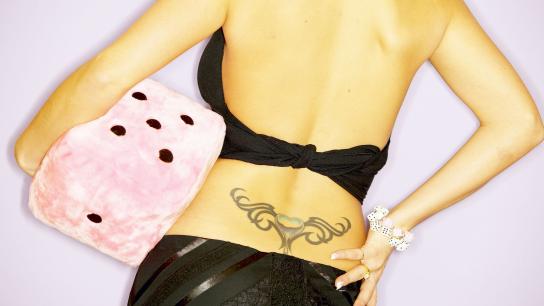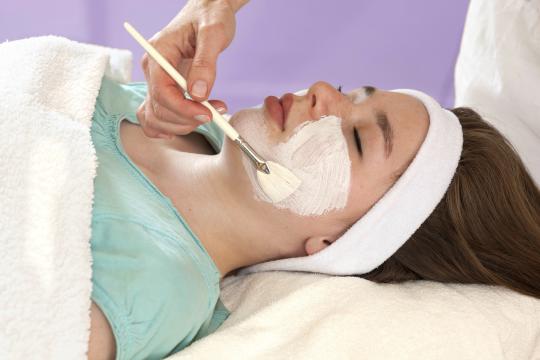
Once considered the mark of time spent in the big house, a biker gang, or on the high seas (ahoy!), having a tattoo is now just this side of mainstream. You, your barista, your boss, your grandma… everyone has a tattoo. Okay, not everyone. But close. A 2015 Harris Poll found that a staggering 3 in 10 adults are sporting ink of some kind or another, and many tattoo-owners have more than one. Whether you made the choice to get your tattoo(s) in full, sober confidence or under the duress of alcohol and adolescent angst, you may now also be amongst the 23% of tattoo owners who’d like to undo their ink.
The days of tattoo-stigma are well behind us—and good riddance—but since we’re here to inform, this is for those of you hoping to rid yourself of your tattoo. If the information that needs informin’ is rethinkin’ the inkin’, then let's go.
Tattoo removals painful past.
Tattoo removal has been around for a long time. And it’s never been the simple swipe of an eraser that we’d like it to be. In fact, in the not-so-distant past, having a tattoo removed was a painful and invasive procedure. Surgical removal of the inked area and/or sanding away at the skin through dermabrasion and salabrasion (using a salt solution) were both painful and time intensive methods used to undo ink, as was chemical scarification (the body-modification technique of replacing the tattoo with a scar), and cryosurgery (freeze burning the tattoo into oblivion). The horrors of these procedures (scarring and pain) were often deterrent enough to avoid having them. #thanksnothanks
But as tattoo removal evolved, and lasers took over the bulk of doctor-recommended treatments, the process has dramatically improved. No, it’s still not foolproof, but it’s getting closer. Which brings us the the tippy-top of the food-chain when it comes to undoing your ink: the Q-switched laser.
Q-switched laser tattoo removal:
Considered the “gold-standard” in laser tattoo removal, Q-switched laser devices (Ruby, Nd:YAG, Alexandrite laser) target the unwanted ink with short laser pulses. The pulses break down the ink particles which are then absorbed back into the bodies own immune system, eliminating the tattoo without too much damage to the surrounding skin tissue. And since, unlike other lasers, Q-switched lasers can produce varying wavelengths, they are effective at targeting almost every color on the spectrum.
Of course, Q-switched laser tattoo removal does come with its own set of pros and cons. The pros… well, your tattoo is sufficiently removed in a minimally invasive procedure that is effective and has little downtime. The cons? Q-switched lasers aren’t entirely painful… but they’re also not not painful. Some patients describe it as being snapped by a rubber band… over, and over, and over again. This approach is also time consuming, oftentimes requiring between 10 and 12 treatments to see full results—and multiple treatments usually mean multiple dollar signs.
Let’s also define “full results,” shall we? The risks of laser tattoo removal include the possibility of scarring, changes to the texture of the skin, and maybe even a ghostly trace of your former tattoo called a recalcitrant tattoo which is left behind. And did we mention the risk of infection? Yeah, that too. Still the Q-switched laser treatment approach is highly regarded as the best, most accurate and safest method of eliminating your ink.
Surgical tattoo removal:
Of course, if you’re looking to wipe your tattoo clean off the face of the earth in a one-time, guaranteed procedure, then surgical excision might still be your best bet. Like all surgical procedures, this comes with its own set of drawbacks and risks: it’s an invasive procedure and with that comes the additional risk of a surgical incision, infection and/or scarring.
Just like hitting ‘send’ on that late night text, permanently tattooing ink onto and into your skin is a difficult decision to take back. Which is why you’ll want to sit down with a board-certified plastic surgeon who has experience in tattoo removal (and the before/after photos to prove it). They are the best resource for deciding which treatment plan is right for you through careful consideration of all the variables associated with tattoo removal. Your skin color and the color, shape, age and size of your tattoo, as well as your tolerance for discomfort and any additional risk are all important factors your surgeon will use in determining how to best erase your unwanted ink.
So there we have it. The ink-stained regrets of an errant romance or a swarthy life-on-the-high-seas (ahoy!) aren’t forever, no matter what your tattoo artist said. If only your criminal record were so easy to undo, right? (We kid, we kid!)





